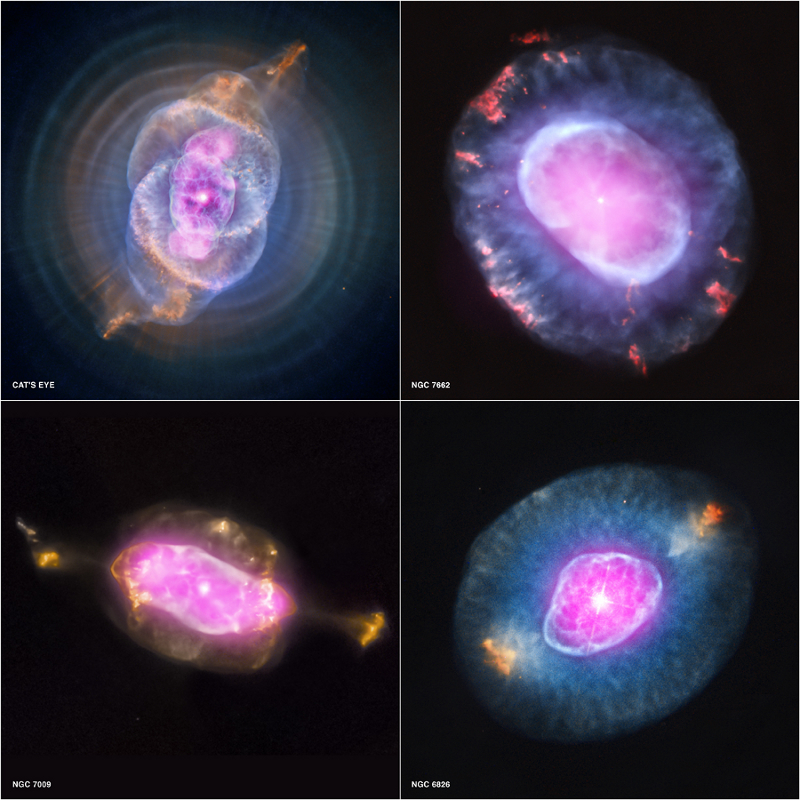
 Credit: X-ray: NASA/CXC/RIT/J.Kastner et al.; Optical: NASA/STScI
Credit: X-ray: NASA/CXC/RIT/J.Kastner et al.; Optical: NASA/STScI
Dead Star Survey
Stars like our Sun eventually run out of the fuel they need to power their core thermonuclear engines. When this happens, the star will undergo dramatic changes, morphing from a huge ball of hot plasma to an earth-sized chunk of carbon (or, sometimes, helium) called a white dwarf. A white dwarf is often surrounded by the ejected remnant of the stellar atmosphere; this extensive remnant is called a planetary nebulae (since when viewed through a small telescope, the nebula are similar in appearance to the gas giant planets). Planetary nebulae show an amazing variety of shapes, some nearly spherical, some bipolar, some with impressive twisted shells and streaks, or even more bizarre shapes. Important questions remain about how all these different shapes are formed, and how the shape of the planetary nebula is related to the dead core of the star or the properties of the progenitor star. To help answer these questions, the Chandra X-ray Observatory is undertaking the first systematic X-ray study of planetary nebula, measuring all known planetary nebula within 5000 light years from earth. This survey (combined with earlier Chandra observations) is known as ChanPlaNS, and is designed to help answer questions regarding how many planetary nebula progenitors are orbited by companion stars, and whether these companions play an important role in driving off the stellar atmosphere or shaping the resulting nebula. These X-ray observations can also help constrain the amount of time it takes for the strong winds from the central star to shape the nebula. The image above shows four dramatic optical+X-ray images from this survey; the X-ray data is shown in pink, and is superimposed on optical Hubble Space Telescope images. These combined images help reveal the region where the central star wind is colliding with the most recent atmospheric shell ejected from the dying star.
Published: November 12, 2012
<
HEA Dictionary ● Archive
● Search HEAPOW
● Other Languages
● HEAPOW on Facebook
● Download all Images
● Education ● HEAD
>

Each week the HEASARC
brings you new, exciting and beautiful images from X-ray and Gamma ray
astronomy. Check back each week and be sure to check out the HEAPOW archive!
Last modified Tuesday, 27-Feb-2024 10:10:15 EST


